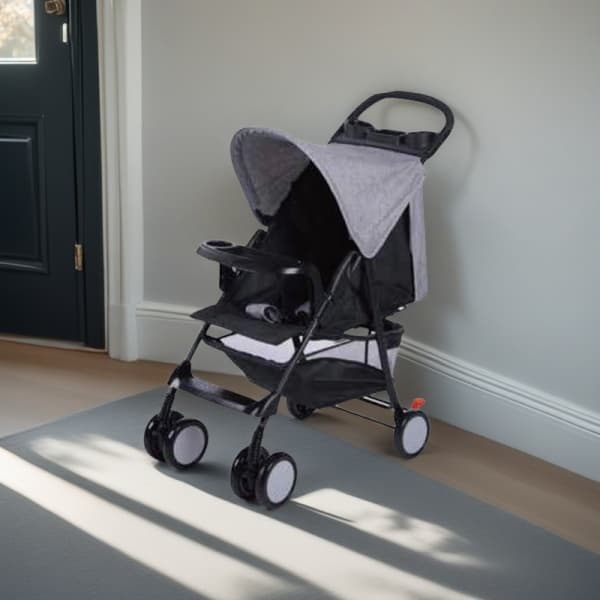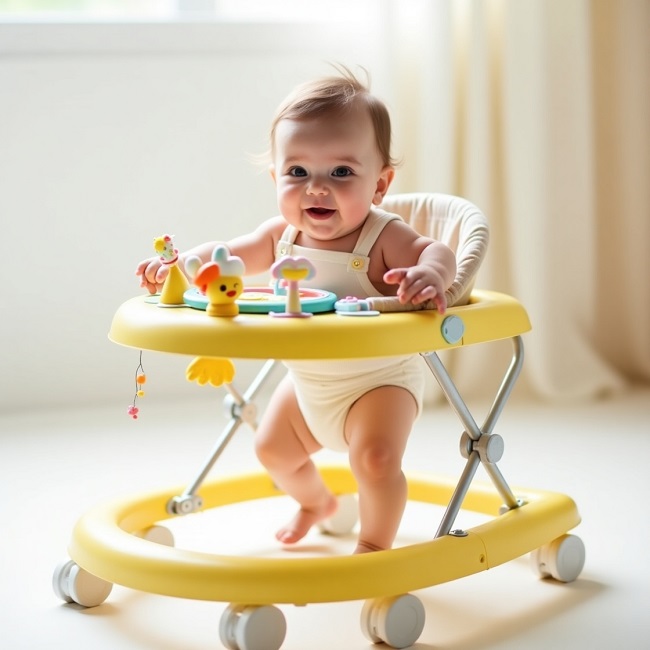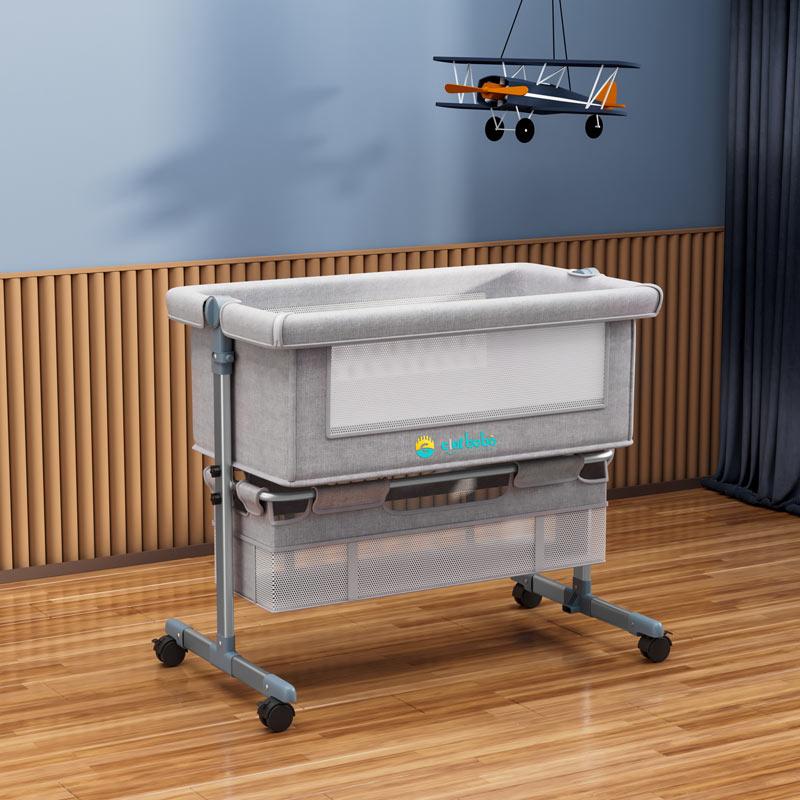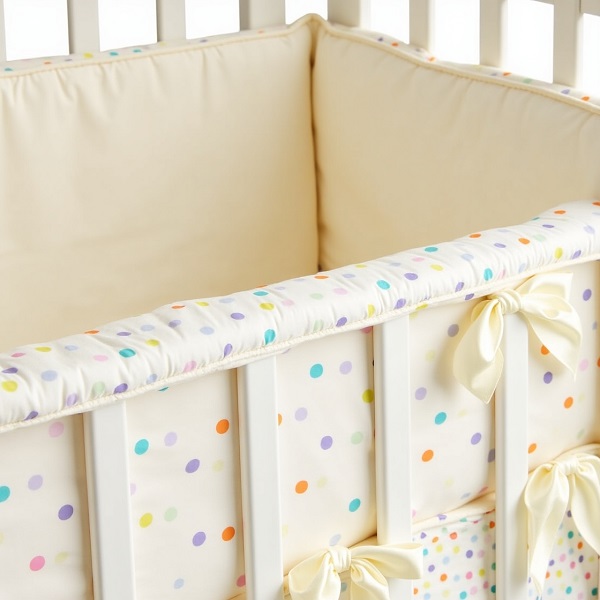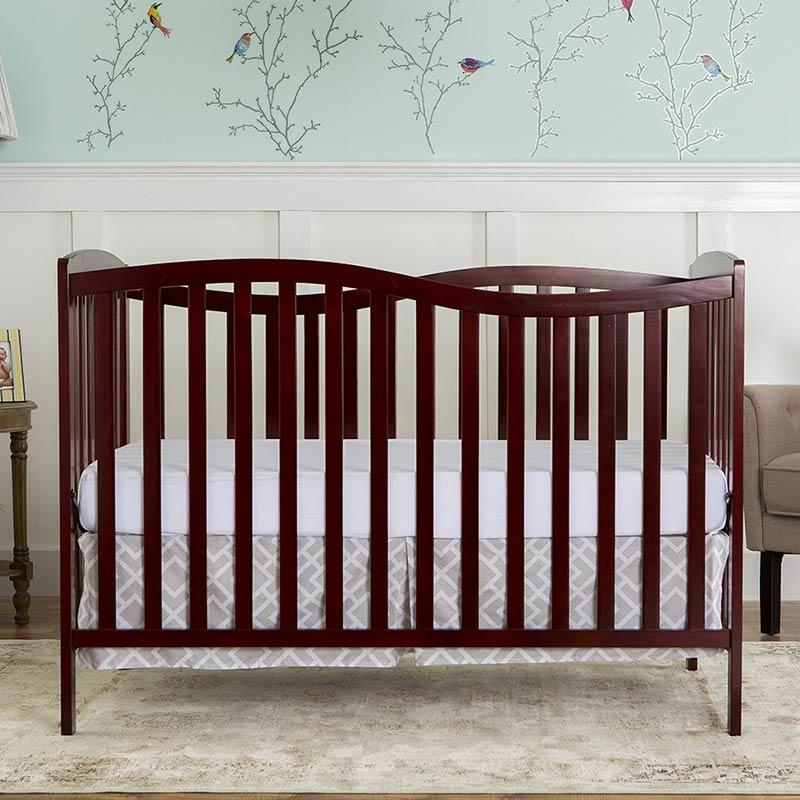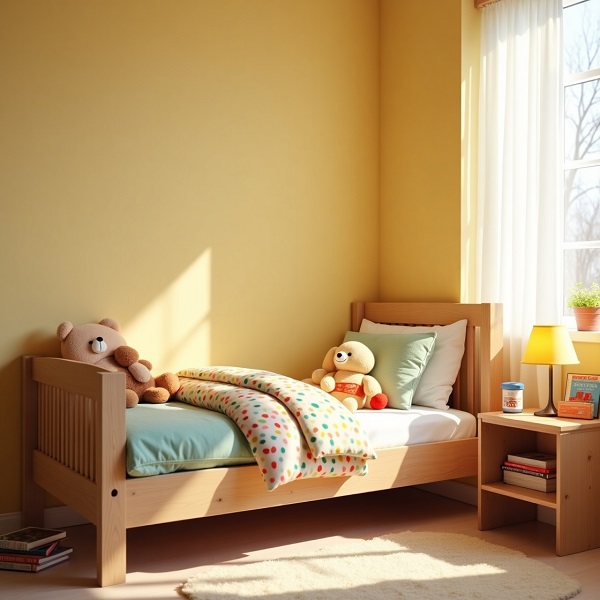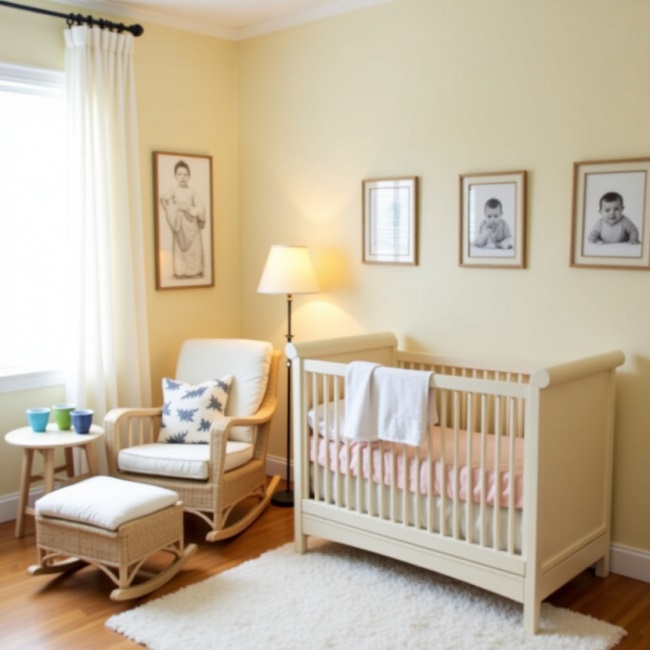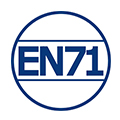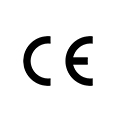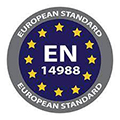Escolher o carrinho de bebê perfeito é uma das decisões mais importantes que os novos pais tomarão: uma decisão que combina praticidade, segurança e aspirações de estilo de vida em um único centro móvel para as primeiras aventuras do seu filho.
Um carrinho urbano elegante vale a pena sacrificar o espaço de armazenamento? O design robusto de um carrinho de corrida justifica seu volume? E como você prepara sua compra para o futuro, para uma família em crescimento ou rotinas em evolução?
Este guia corta o ruído, oferecendo uma estrutura estratégica para combinar seu carrinho de bebê com o ritmo único da sua família. Apoiados por padrões de segurança pediátrica, pesquisa ergonômica e depoimentos de pais do mundo real, exploraremos como os viajantes urbanos, aventureiros ao ar livre e viajantes podem identificar seu modelo ideal.
Tipos de carrinhos de bebê 101
Carrinho de passeio leve tipo guarda-chuva
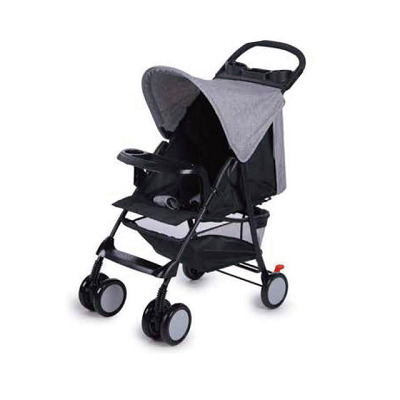
Carrinhos de bebê guarda-chuva pesando menos de 6 kg são como o “segundo par de pernas” dos pais urbanos. Sua principal vantagem está na extrema portabilidade: pode ser dobrado em uma mão, pode ser embarcado e tem uma alça para pendurar, o que é perfeitamente adequado para deslocamentos de metrô, passeios autônomos ou compras de supermercado.
De acordo com uma pesquisa da British Maternity and Infant Association, 73% de famílias com dupla renda usam carrinhos de bebê tipo guarda-chuva como seu principal veículo após um ano de idade.
No entanto, o peso reduzido tem um preço: os encostos dos assentos geralmente são de lona com ajuste contínuo, e o uso prolongado pode afetar o desenvolvimento da coluna vertebral do bebê (os pediatras recomendam cautela no uso por menores de 18 meses).
Além disso, o diâmetro das rodas de carrinhos de guarda-chuva é geralmente menor que 15 cm, e a transitabilidade em estradas de cascalho, gramados e outros terrenos é ruim. Portanto, carrinhos de bebê tipo guarda-chuva são mais adequados como um “segundo carro reserva” do que a primeira escolha para recém-nascidos.
Carrinho multifuncional todo-terreno
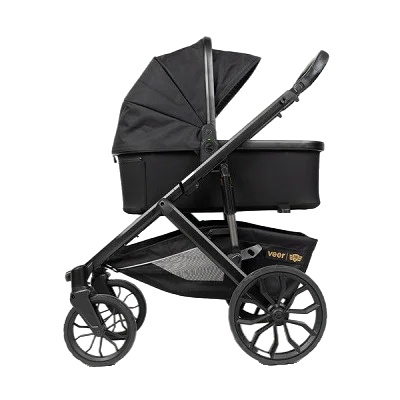
Se a família frequentemente precisa lidar com cenários complexos (como pegar e deixar o segundo filho, passeios de fim de semana), um carrinho multifuncional é a escolha definitiva. Esse tipo de veículo geralmente tem um assento reversível, que muda livremente para ficar de frente para os pais ou para o cenário para atender às necessidades emocionais de crianças de 0 a 3 anos.
Além disso, possui suspensão independente nas quatro rodas com pneus pneumáticos acima de 20 cm, que amortecem os solavancos das lombadas dos shoppings e trilhas na mata.
A agência alemã de certificação de segurança TÜV destacou que a estrutura de liga de alumínio de um veículo multifuncional de alta qualidade pode suportar 100.000 testes de abertura e fechamento, e o ciclo de vida é de 5 a 8 anos.
No entanto, o rótulo “all-round” desse tipo de veículo também significa compromisso: o peso fica principalmente entre 12-15 kg e ainda ocupa a maior parte do porta-malas após o armazenamento. Se o raio de atividade familiar for principalmente ao redor da comunidade, sua vantagem de desempenho pode ser compensada pela utilização insuficiente.ise: o peso fica principalmente entre 12-15 kg e ainda ocupa a maior parte do porta-malas após o armazenamento. Se o raio de atividade familiar for principalmente ao redor da comunidade, sua vantagem de desempenho pode ser compensada pela utilização insuficiente.
Carrinho de bebê duplo

Como o nome indica, este carrinho é projetado para duas crianças. Carrinhos duplos geralmente têm as três configurações a seguir:
- Lado a lado: assentos iguais evitam a competição entre irmãos, mas a largura de 78 cm geralmente bloqueia a moldura da porta padrão.
- De frente para trás: visão traseira e interatividade limitadas, mas pode ser convertido em um único carrinho por meio de design modular;
- Estilo sentado e em pé: assento dianteiro + pedal traseiro, adequado para crianças maiores de 3 anos ficarem de pé, mas a mudança do centro de gravidade aumenta o risco de capotamento.
A US Consumer Reports conduziu uma pesquisa de acompanhamento com 200 famílias com dois filhos e descobriu que carrinhos lado a lado eram usados com mais frequência nos primeiros 6 meses (porque são fáceis de confortar ao mesmo tempo), mas depois que a criança completa 2 anos, 85% das famílias recorrem a uma combinação mais flexível de carrinho simples + pedal.
Portanto, alugar ou comprar plataformas de segunda mão pode ser uma solução melhor para carrinhos duplos de alto preço.
Sistema de viagem
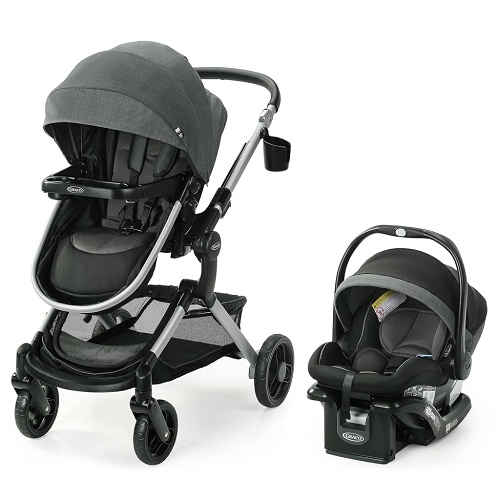
Para bebês de 0 a 6 meses, um sistema de viagem que pode ser pareado com uma cadeirinha de bebê é a escolha clinicamente recomendada. Seu valor principal está na proteção da continuidade do sono: a cadeirinha de segurança removida da base do carro pode ser diretamente embutida na estrutura do carrinho para evitar acordar bebês levemente adormecidos durante o movimento.
Uma pesquisa da AAP nos Estados Unidos confirmou que interrupções do sono causadas por transporte frequente podem afetar o desenvolvimento neurológico de recém-nascidos, e o sistema de viagem pode reduzir a interferência em 72%.
No entanto, essa conveniência vem com custos ocultos. O período de uso da cadeirinha de carro geralmente não é mais do que 9 meses (ela precisa ser substituída depois que o bebê pesa 9 kg). A taxa de instalação correta da cadeirinha de carro é de apenas 58% (dados da US Highway Safety Administration), e o uso incorreto pode amplificar os riscos de segurança.
Carrinhos de corrida
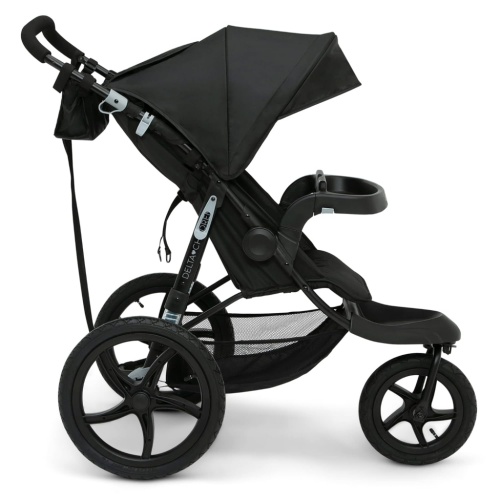
Para pais que amam correr ou fazer trilhas, as rodas rígidas e o sistema de direção fixa dos carrinhos tradicionais são difíceis de atender às suas necessidades esportivas. Carrinhos de corrida projetados para cenas dinâmicas se tornaram uma escolha ideal para a companhia de pais e filhos e para uma vida saudável.
Este tipo de veículo não apenas atende às recomendações de segurança da Academia Americana de Pediatria (AAP) para atividades ao ar livre para bebês e crianças pequenas, mas também transforma o impacto de solavancos em impulso estável para a frente por meio de inovação de engenharia.
O carrinho de corrida adota uma estrutura clássica de três rodas com uma roda dianteira fixa + rodas traseiras duplas, e o diâmetro da roda é ≥16 polegadas. Os pneus de borracha pneumáticos são equipados com sulcos profundos para garantir aderência em estradas de asfalto, estradas de cascalho e até mesmo terrenos off-road leves.
No entanto, deve-se notar que a AAP recomenda explicitamente que ele seja usado apenas por bebês com mais de 6 meses de idade que consigam manter suas cabeças estáveis de forma independente. O uso precoce pode causar lesões no pescoço devido a batidas.
Quais são os recursos de segurança essenciais em um carrinho de bebê?
Entre as várias funções dos carrinhos de bebê, o design de segurança é o ponto principal que nunca pode ser comprometido. De acordo com dados da National Highway Traffic Safety Administration (NHTSA), há mais de 3.500 ferimentos causados por defeitos em carrinhos de bebê a cada ano, e 78% deles podem ser evitados por meio de recursos básicos de segurança.
1. Sistema de retenção dinâmica
Um cinto de segurança qualificado não é um simples cinto de pano, mas precisa formar um triângulo mecânico de três pontos para estabilidade. A norma EU EN1888 estipula que os cintos de segurança de carrinhos de bebê devem atender aos seguintes requisitos:
- Fivela de cinco pontos: A combinação dourada de alças de ombro, alças de virilha e alças de perna dispersa a força de impacto para cinco pontos de estresse. Testes mostram que quando o veículo capota acidentalmente, o sistema de cinco pontos pode reduzir o deslocamento do tronco do bebê em 61%.
- Ombreira antiderrapante: Partículas de silicone ou tecidos com textura de favo de mel são usados para evitar que as alças se soltem devido ao deslizamento do tecido.
- Mecanismo de ajuste com uma mão: Os pais podem concluir o ajuste fino da tensão em 3 segundos para garantir que o cinto de segurança mantenha uma folga razoável de “um dedo de largura” entre o corpo do bebê (muito apertado afeta a respiração, muito frouxo perde o significado de proteção).
Alguns modelos de ponta até introduzem dispositivos de pré-aperto de nível automotivo: quando o sensor detecta vibração severa, o cinto de segurança encolhe automaticamente 5%-8% para formar proteção dinâmica.
2. Estrutura e Design do Chassi
A estabilidade de um carrinho de bebê depende do equilíbrio delicado entre o centro de gravidade e o fulcro. O ponto principal da segurança inclui:
- Princípio de contato nas quatro rodas: mesmo se totalmente carregado com itens de 10 kg e o toldo estiver totalmente desdobrado, a carga de qualquer roda individual não deve ser inferior a 15% do peso total (para evitar inclinação unilateral).
- Sistema de freio duplo de estacionamento: As alavancas de freio independentes das rodas traseiras devem ser travadas sincronizadamente, e o sinal de alerta vermelho aparecerá automaticamente quando os freios pararem. A simulação do laboratório alemão Rhine TÜV descobriu que a distância de deslizamento do projeto de freio único em uma inclinação de 5° é 2,3 vezes maior que a do freio duplo.
- Dispositivo de autotravamento dobrável: As juntas do quadro devem ser equipadas com fivelas de segurança duplas para evitar dobramento acidental durante o empurrão. A Japan Consumer Product Safety Association uma vez recolheu 32.000 carrinhos de bebê com defeito, principalmente porque a fivela de trava única era destravada automaticamente durante solavancos.
Para famílias com dois filhos, também é preciso ter cuidado com a “armadilha do pedal” – se o pedal de apoio instalado na traseira do carro ultrapassar o eixo da roda traseira em 20 cm, isso pode destruir o equilíbrio geral do torque e aumentar o risco de capotamento.
3. Segurança respiratória
Os carrinhos de bebê não devem apenas prevenir ferimentos externos, mas também bloquear ameaças invisíveis:
- Taxa de circulação de ar: O protetor solar deve reter pelo menos 30% da área permeável da malha para evitar o acúmulo de dióxido de carbono.
- Migração de metais pesados: O teor de chumbo e cádmio dos apoios de braço e revestimentos da estrutura deve estar em conformidade com a norma de segurança de brinquedos EN71-3, e estar especialmente alerta para os perigos ocultos de descascamento da tinta de imitações inferiores.
Ao escolher um carrinho, torne-se um “consumidor detetive”: use os dedos para verificar se cada costura tem bordas afiadas, sacuda o corpo vigorosamente para testar as articulações em busca de ruídos anormais e até use um copo de água para simular a estabilidade do líquido durante o empurrão.
Confira nosso blog Normas de segurança para carrinhos de bebê: um guia completo, para mais detalhes de segurança.
Quais recursos principais devem ser priorizados?
Manobrabilidade e Rodas
Empurrar seu filho até o supermercado para fazer compras, dar uma volta ou ir à casa dos avós – o fato de o carrinho ser fácil de empurrar determina diretamente se você ficará relaxado ou frustrado ao sair.
Um carrinho com mobilidade forte pode virar facilmente. Especialmente ao encontrar corredores estreitos ou prateleiras de supermercado, um carrinho que pode se deslocar com flexibilidade como um "pequeno corvina amarelo" pode evitar muitos problemas.
Se você costuma andar em estradas de paralelepípedos e gramados, escolha um estilo com pneus grossos e molas que absorvem choques. É como deixar o bebê sentar em um "pequeno sofá", e a sensação de solavancos será muito mais leve.
Conforto e inclinação do assento
A coluna do bebê é tão delicada quanto o tofu macio, e o design do assento afeta diretamente a segurança do desenvolvimento. Bebês com menos de 6 meses devem escolher um assento que possa ficar quase plano a 170 graus (ficar completamente plano pode facilmente engasgar com leite). Sinta se a almofada do assento é grossa, de preferência com um pouco de elasticidade, como um travesseiro de espuma de memória para adultos.
Quando o bebê estiver dormindo, mude para o modo reclinado e, quando ele acordar, mude para o modo meio sentado para observar o mundo. Preste atenção se o botão de ajuste é fácil de ficar preso. Escolha um tecido respirável com acolchoamento, adequado para todas as estações.
Ajuste de assento bidirecional
Esta função não é necessária, mas adicionará muita diversão se estiver disponível. Quando o bebê tiver de 0 a 8 meses, ajuste o assento para ficar de frente para a mãe. O bebê pequeno se sentirá particularmente aliviado ao ver o rosto da mãe. Depois que o bebê tiver 8 meses, ele ficará curioso depois de sentar-se firmemente. Vire o assento e ele observará o mundo cuidadosamente!
Ao escolher, preste atenção à suavidade ao girar o assento.
Espaço de armazenamento
Levar um bebê para passear é como mudar de casa. Fraldas, mamadeiras, brinquedos, lenços umedecidos… o espaço de armazenamento determina diretamente se você pode viajar com elegância ou bagunça.
Escolha um carrinho com uma cesta inferior grande o suficiente para acomodar as necessidades da mãe e do bebê. Preste atenção ao design da abertura – o zíper lateral é mais conveniente para levar coisas do que a abertura superior. É melhor ter bolsas de armazenamento adicionais ou compartimentos para itens pequenos.
Tenha cuidado. Alguns carrinhos de bebê fazem as cestas de armazenamento em uma fina camada de bolsas de rede para parecerem leves. Na verdade, elas não podem segurar itens com pouco peso e podem até quebrar facilmente.
Alça ajustável
Se os pais ou cuidadores usarem um carrinho de bebê, a alça ajustável garante que pessoas de diferentes alturas possam empurrá-lo confortavelmente.
Alças ergonômicas fazem você se sentir confortável ao caminhar longas distâncias. Ao contrário, se a altura da alça não for apropriada, causará tensão muscular lombar.
Proteção de dossel
Você precisa de proteção contra sol e chuva quando sai. Um dossel grande pode fornecer sombra e ajudar a proteger seu filho dos raios UV. Não subestime esse pedaço de pano, ele determina se seu bebê dorme em paz no carro ou se queima de sol.
Escolha um com certificação de proteção solar UV50+, que é equivalente a segurar um guarda-chuva profissional de proteção solar para seu bebê. Além disso, um guarda-sol com revestimento à prova d'água pode durar 10 minutos a mais e passar por baixo dos beirados.
Como escolher um carrinho de acordo com seu estilo de vida diário?

1. O viajante urbano: famílias que vivem na cidade
Sua vida: calçadas estreitas, escadas de metrô, encontros em cafeterias e idas à escola em cidades movimentadas como Nova York ou Londres.
Principais necessidades: Design compacto, agilidade e dobragem rápida para transporte público.
Melhores escolhas: carrinhos de bebê ultracompactos tipo guarda-chuva, carrinhos de bebê urbanos com suspensão nas quatro rodas
Por que é importante: Um estudo de 2023 do Urban Parenting Institute descobriu que 68% de pais da cidade priorizam o peso do carrinho em detrimento de outros recursos. Teste a manobrabilidade simulando um corredor lotado de mercado de agricultores — ele consegue girar com uma mão enquanto segura um café com leite?
2. O aventureiro ao ar livre: famílias ativas em subúrbios ou áreas rurais
Sua vida: caminhadas de fim de semana, trilhas de cascalho, dias de praia ou caminhadas pela vizinhança com neve.
Principais necessidades: durabilidade em todos os terrenos, suspensão e resistência às intempéries.
Melhores escolhas: carrinhos de corrida, carrinhos todo-terreno
Observação: a Academia Americana de Pediatria (AAP) desaconselha o uso de carrinhos de corrida para bebês menores de 6 meses devido à tensão no pescoço. Para aventuras de inverno, opte por protetores de pés isolados e tecidos à prova d'água classificados para -10°C.
3. O gerente de vários filhos: famílias em crescimento
Sua vida: Levar crianças pequenas e bebês à escola, ou gêmeos a caminho.
Principais necessidades: configurações modulares, segurança para irmãos e armazenamento para o dobro do equipamento.
Melhores escolhas: carrinho duplo, carrinhos tandem expansíveis
Verificação da realidade: uma pesquisa da Consumer Reports descobriu que 72% de pais de gêmeos mudam para filhos de solteiro leves aos 3 anos de idade. Considere alugar ou comprar usados por meio de plataformas como o Facebook Marketplace para economizar custos.
4. A família Jet-Setting: viajantes frequentes
Sua vida: voos cross-country, férias na Europa ou viagens de carro.
Principais necessidades: conformidade com companhias aéreas, dobragem compacta e compatibilidade global.
Melhores escolhas: sistemas de viagem, carrinho de bebê leve tipo guarda-chuva
Dicas de viagem: Use rastreadores de GPS em carrinhos de bebê despachados para evitar perdas no aeroporto. Opte por tecidos de cor escura para esconder respingos de café durante voos com horário marcado.
Quais acessórios e complementos você deve comprar para seu carrinho?
Capa de chuva universal: Um dossel à prova d'água e ventilado protege contra chuvas torrenciais, ao mesmo tempo em que previne o acúmulo de condensação. Procure fechos magnéticos e proteção UV50+ para uso de dupla finalidade.
Extensão de proteção solar UPF50+: Os toldos padrão geralmente deixam as pernas expostas. Extensões clip-on fornecem cobertura de corpo inteiro, bloqueando 99% de raios UV.
Forro de assento ortopédico: Os revestimentos de espuma de memória reduzem os pontos de pressão em 62% em comparação ao tecido padrão. Ideal para prematuros ou bebês com baixo tônus muscular.
Apoio de pernas ajustável: Previne a “síndrome das pernas penduradas” em crianças pequenas. Procure modelos com rotação de 360° para dar suporte ao alinhamento adequado do quadril.
Kits de realce refletivos: Os decalques aumentam a visibilidade noturna em 150%. Aplique nas bordas do dossel e raios das rodas para detecção de 360°.
Ventilador de encaixe: Até mesmo o carrinho mais respirável bloqueará parte do fluxo de ar, tornando-o insuportavelmente quente para o bebê no verão. É quando um pequeno ventilador é um salva-vidas.
Perguntas frequentes
P: Como limpar e manter um carrinho de bebê?
R: A limpeza regular com água e sabão neutro pode manter seu carrinho com aparência nova, enquanto verificações periódicas nas rodas, freios e tecido podem garantir que ele permaneça seguro e funcional.
P: Qual é a vida útil de um carrinho de bebê?
R: A vida útil de um carrinho depende da qualidade de construção, uso e manutenção. Carrinhos de alta qualidade podem durar por várias crianças com os devidos cuidados.
P: Qual é a diferença entre um carrinho de bebê e um carrinho de bebê?
R: Um carrinho de bebê é geralmente leve e projetado para bebês mais velhos e crianças pequenas que conseguem sentar e se sustentar. Ele geralmente tem um assento que pode reclinar em diferentes posições e é adequado para uso em movimento. Em contraste, um carrinho de bebê (abreviação de perambulator) é projetado para recém-nascidos e bebês pequenos que precisam ficar deitados. Os carrinhos de bebê têm um carrinho tipo moisés que permite que os recém-nascidos fiquem confortavelmente deitados enquanto são empurrados.
P: Quando um bebê pode usar um carrinho?
R: Os bebês geralmente podem começar a usar um carrinho quando tiverem desenvolvido controle suficiente do pescoço e da cabeça para sentar-se sozinhos, geralmente por volta dos 6 meses de idade. No entanto, alguns carrinhos oferecem recursos como assentos totalmente reclináveis ou compatibilidade com cadeirinhas infantis, permitindo que sejam usados desde o nascimento.
Conclusão
Da agilidade compacta exigida pelas calçadas da cidade à resiliência robusta necessária para trilhas nas montanhas, cada detalhe do design serve a um propósito na sua vida diária. Ao pesar as opções, lembre-se de que o teste mais verdadeiro de um carrinho não está em suas especificações, mas em quão facilmente ele desaparece no fundo dos seus momentos queridos.
Deixe que os padrões de segurança o guiem, mas deixe que seu estilo de vida o guie. Revise suas rotinas, honre as demandas do seu clima e fique aberto a acessórios que elevem a conveniência.
Clafbebe é um fornecedor de carrinhos de bebê de boa reputação, especializada no atacado de todos os tipos de produtos de carrinhos de bebê de alta qualidade. Entre em contato conosco para um orçamento!
Artigos relacionados recomendados:
- Os 15 principais fabricantes de carrinhos de bebê para 2025
- Quando um bebê pode nascer?t no carrinho?
- Carrinho de bebê vs carrinho de passeio: qual é a diferença?
- Quando as crianças param de usar carrinhos?
- Que tipo de carrinho posso levar no avião?
- Normas de segurança para carrinhos de bebê: um guia completo
- Entenda os diferentes tipos de carrinhos de bebê

